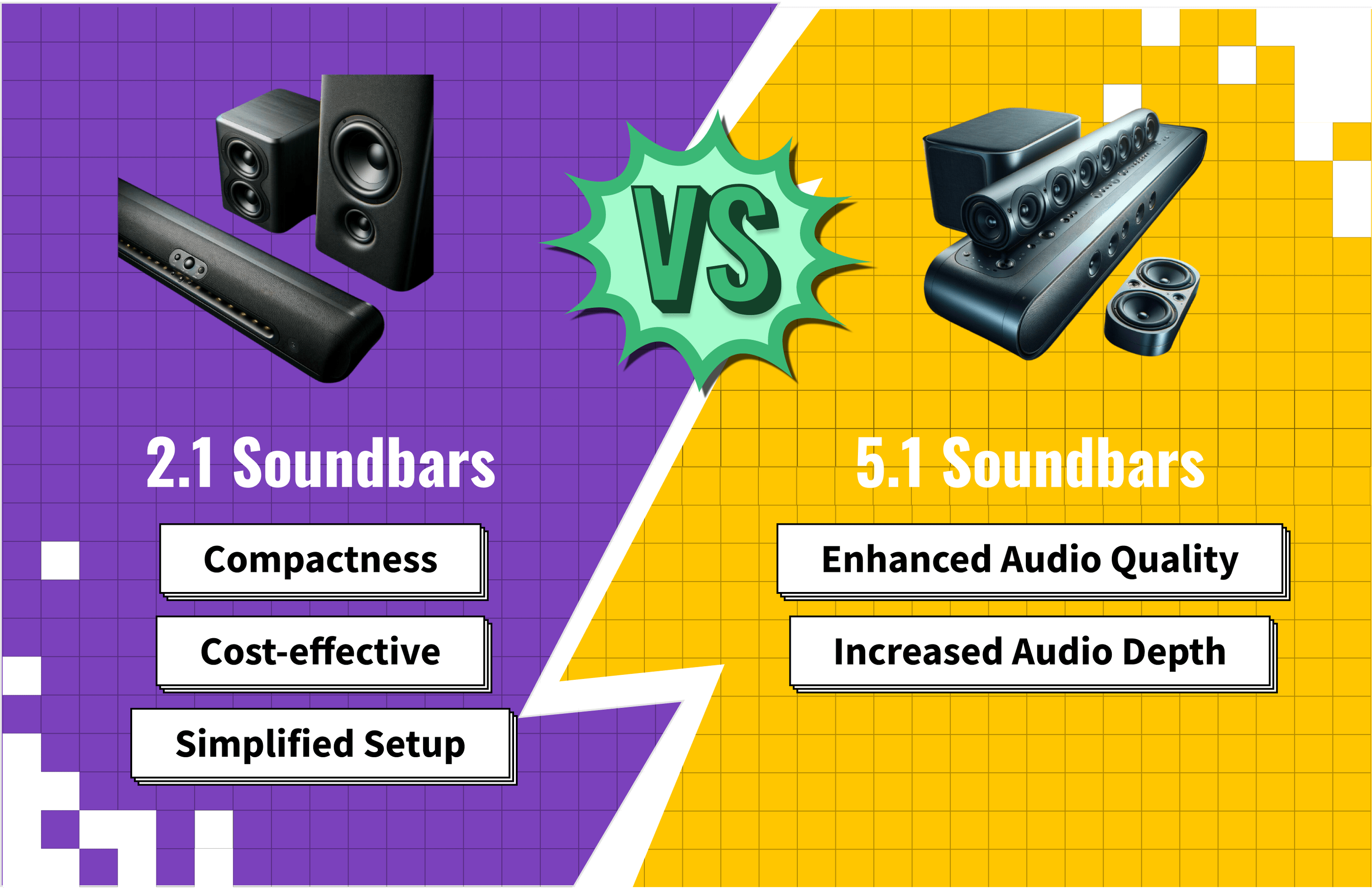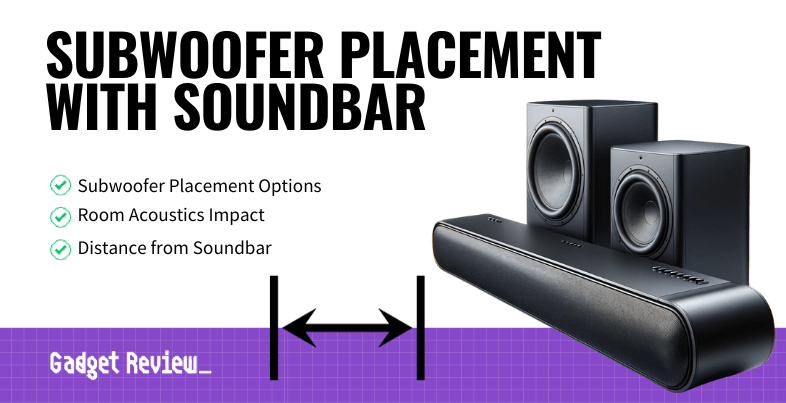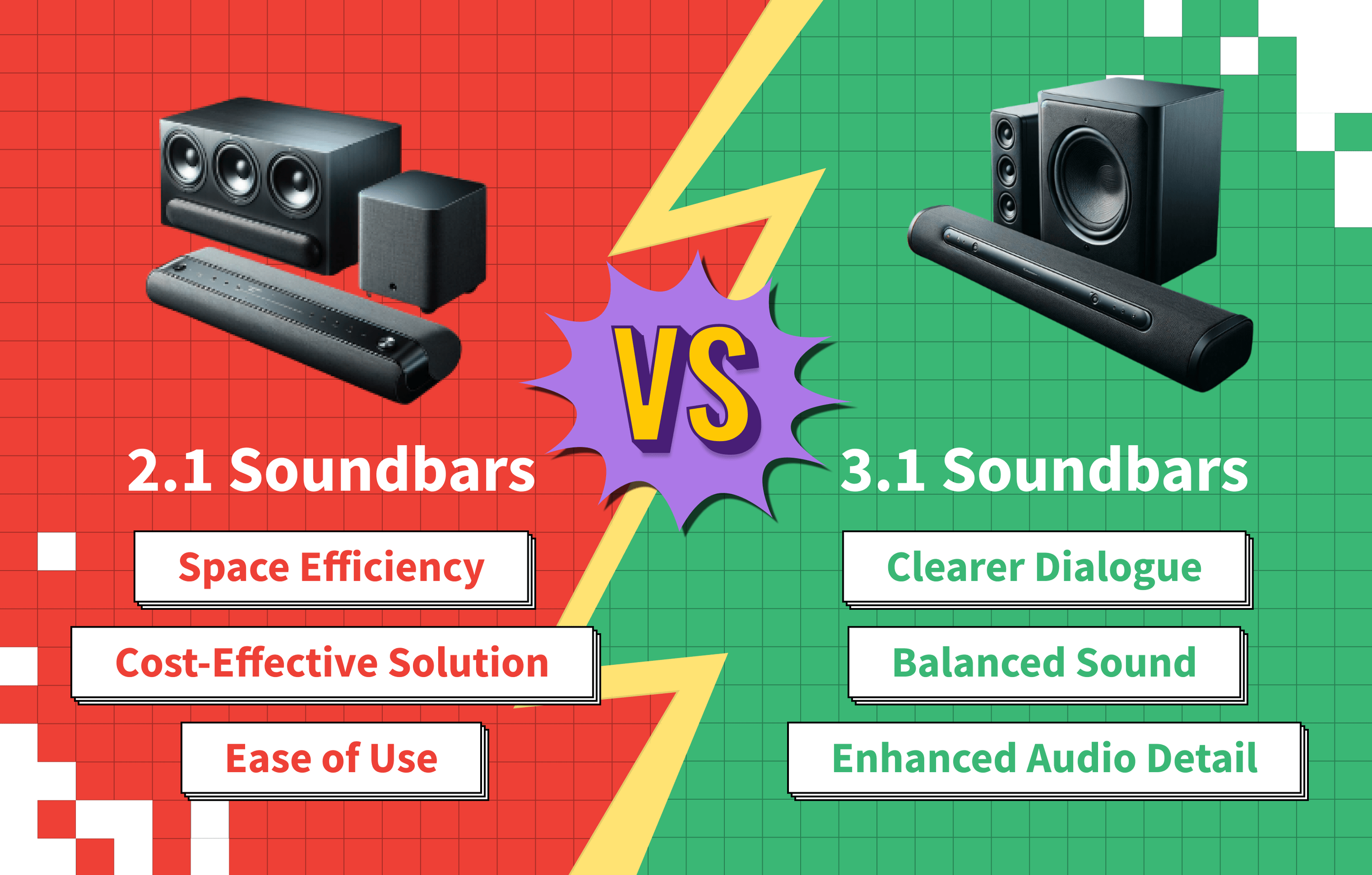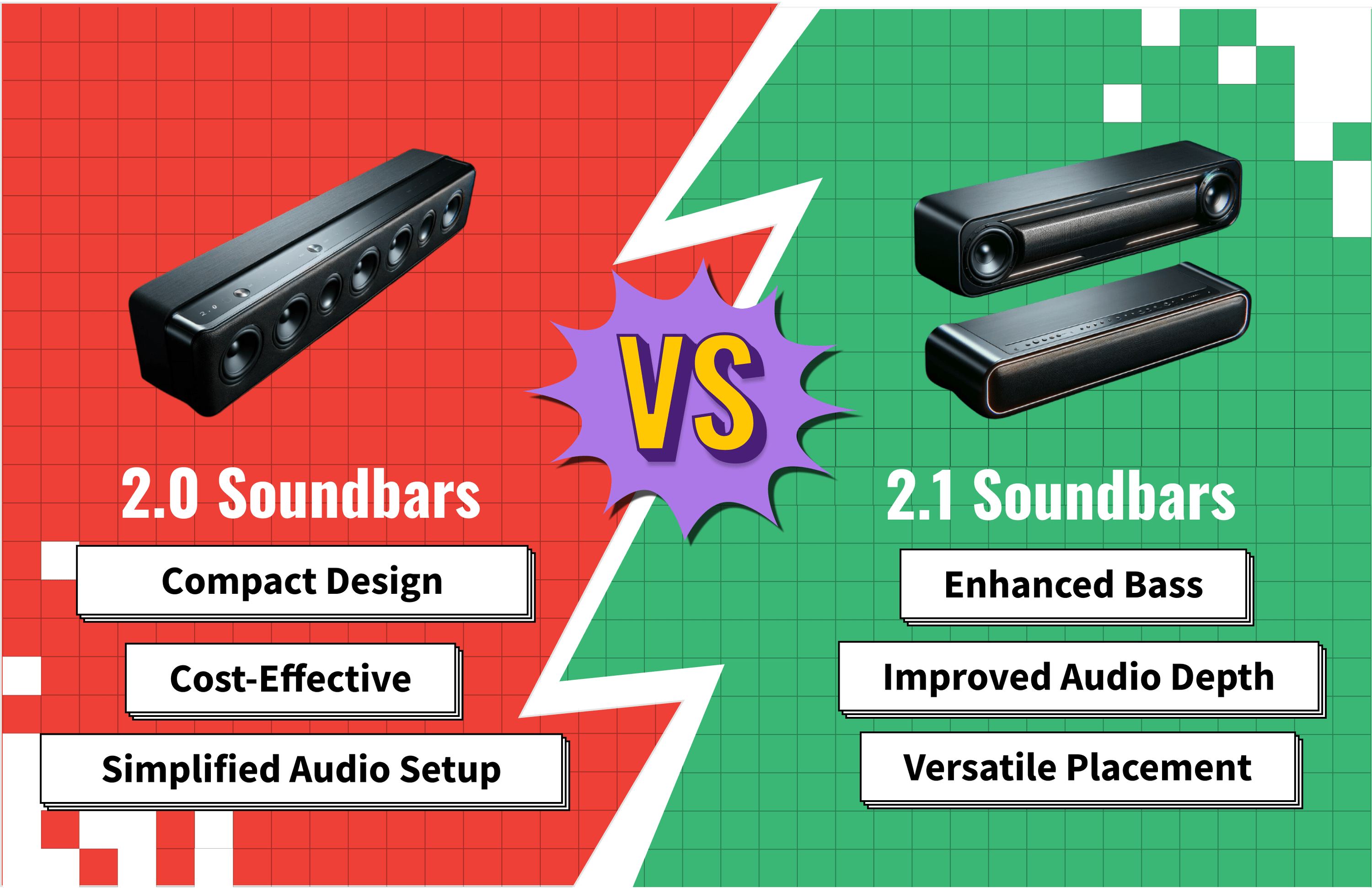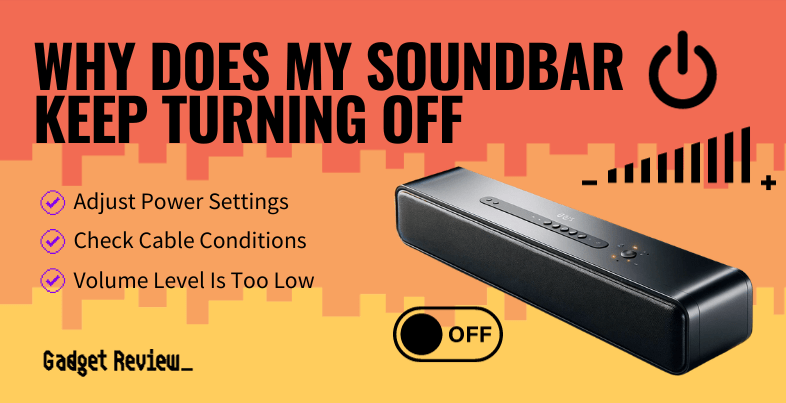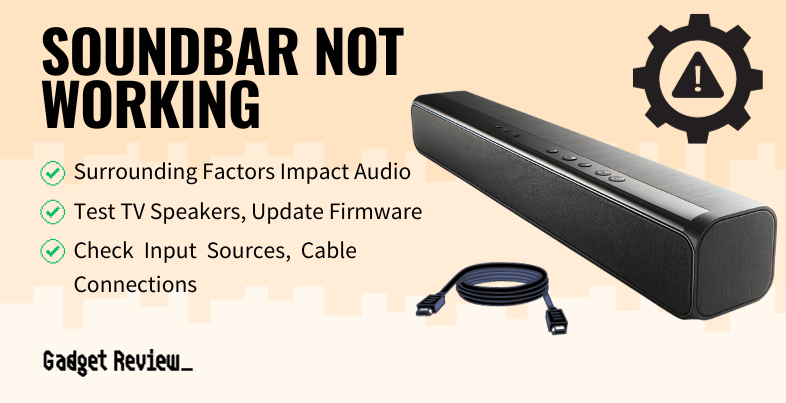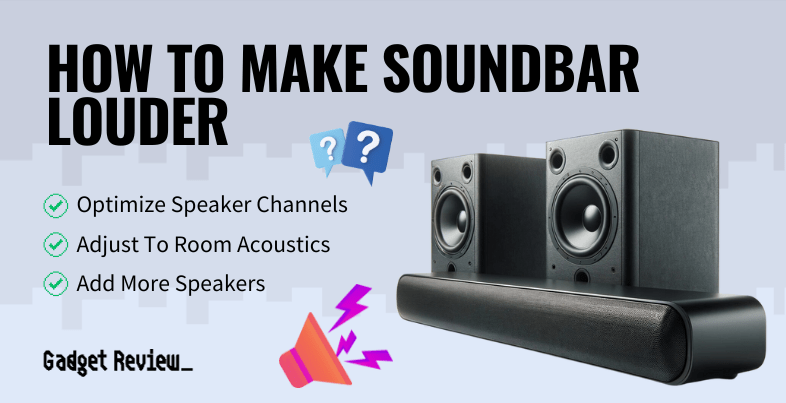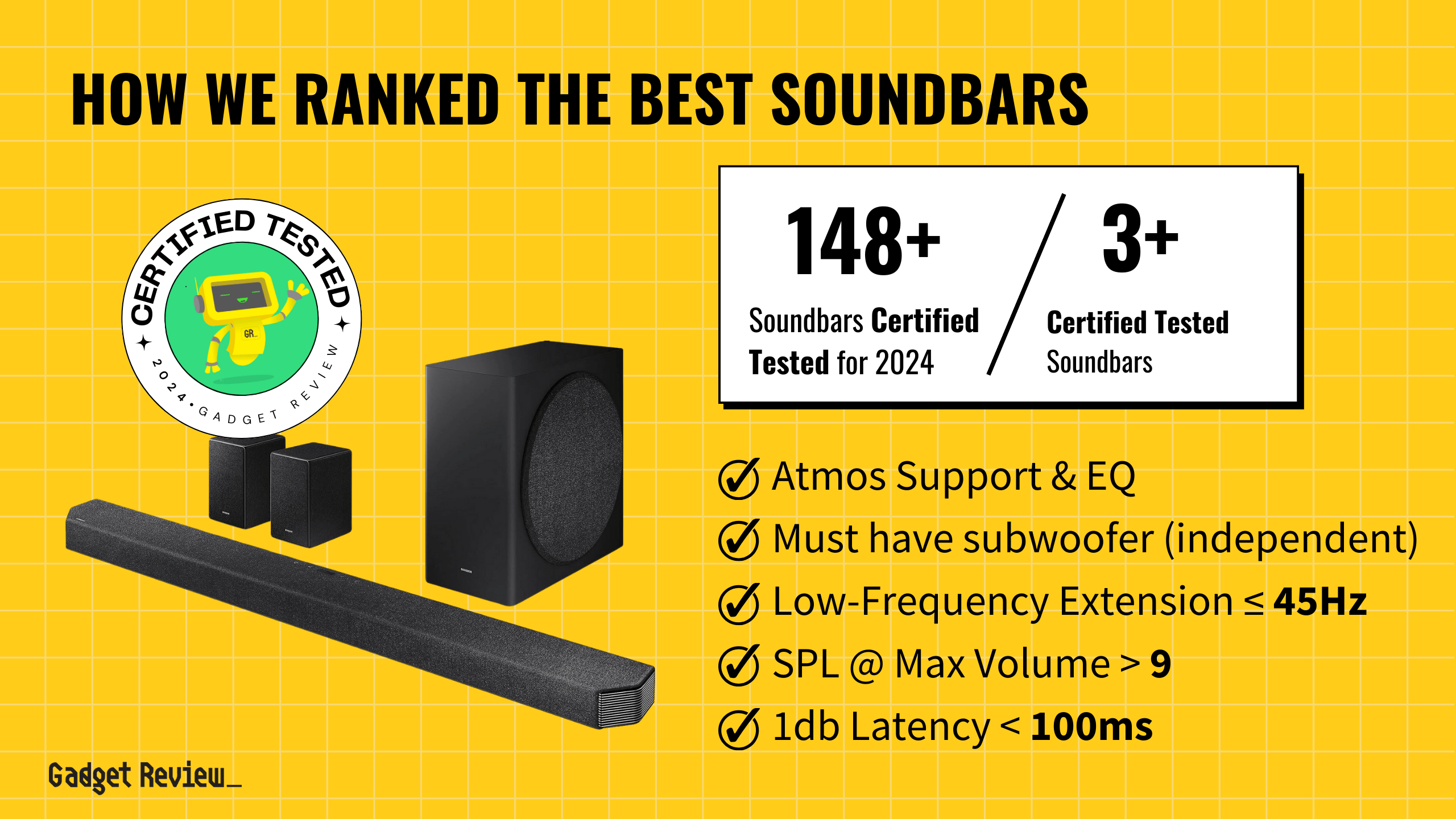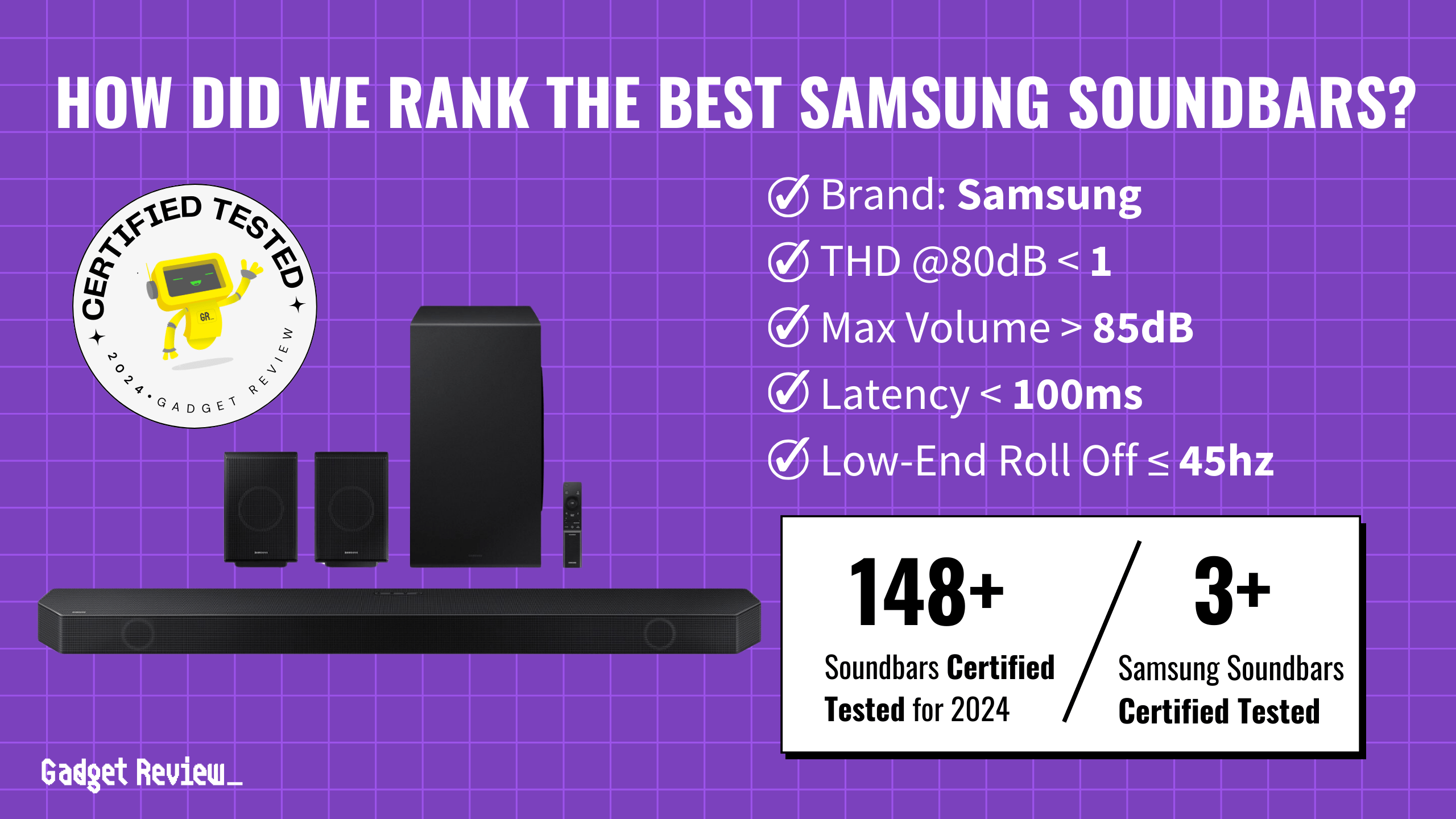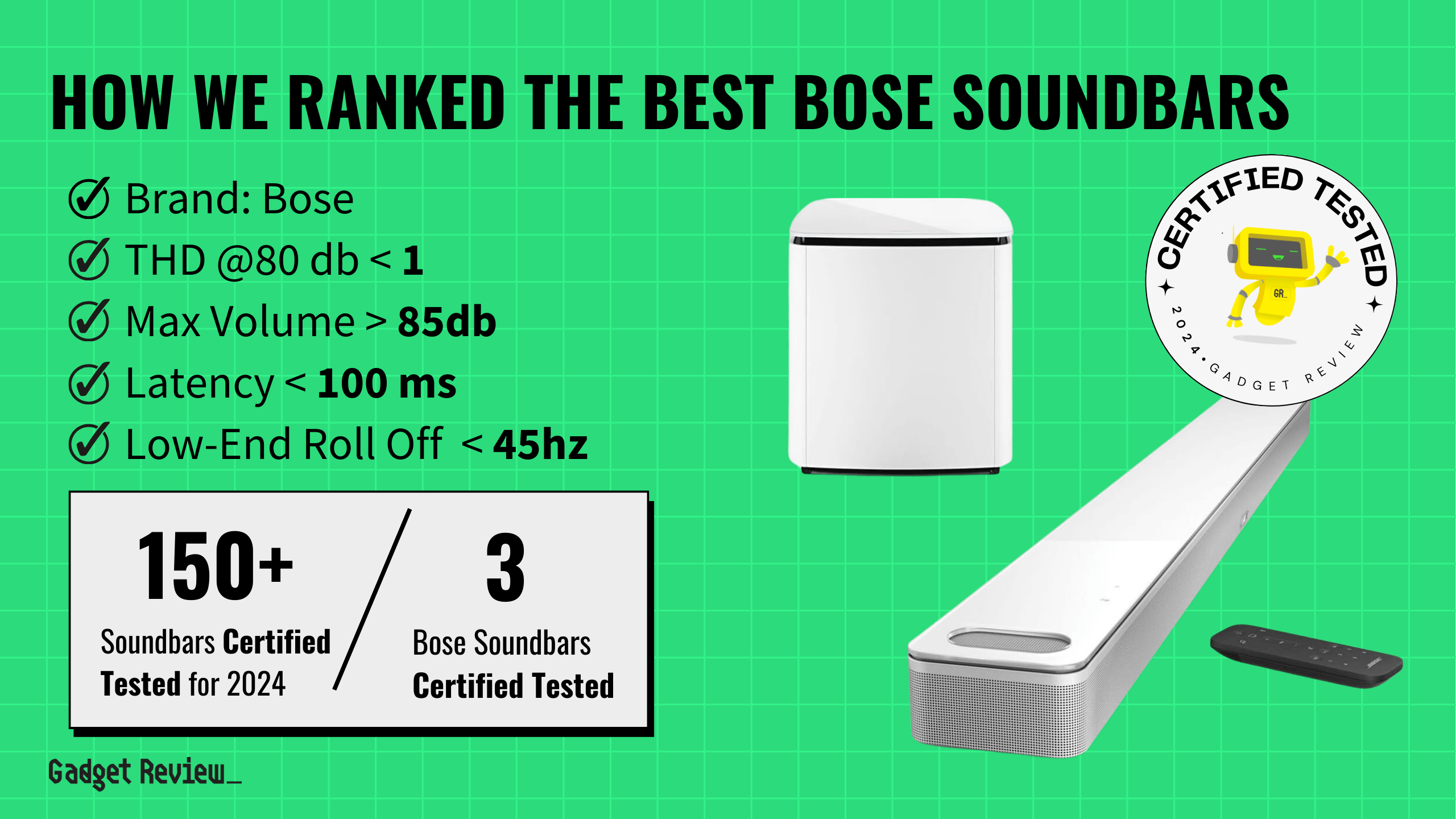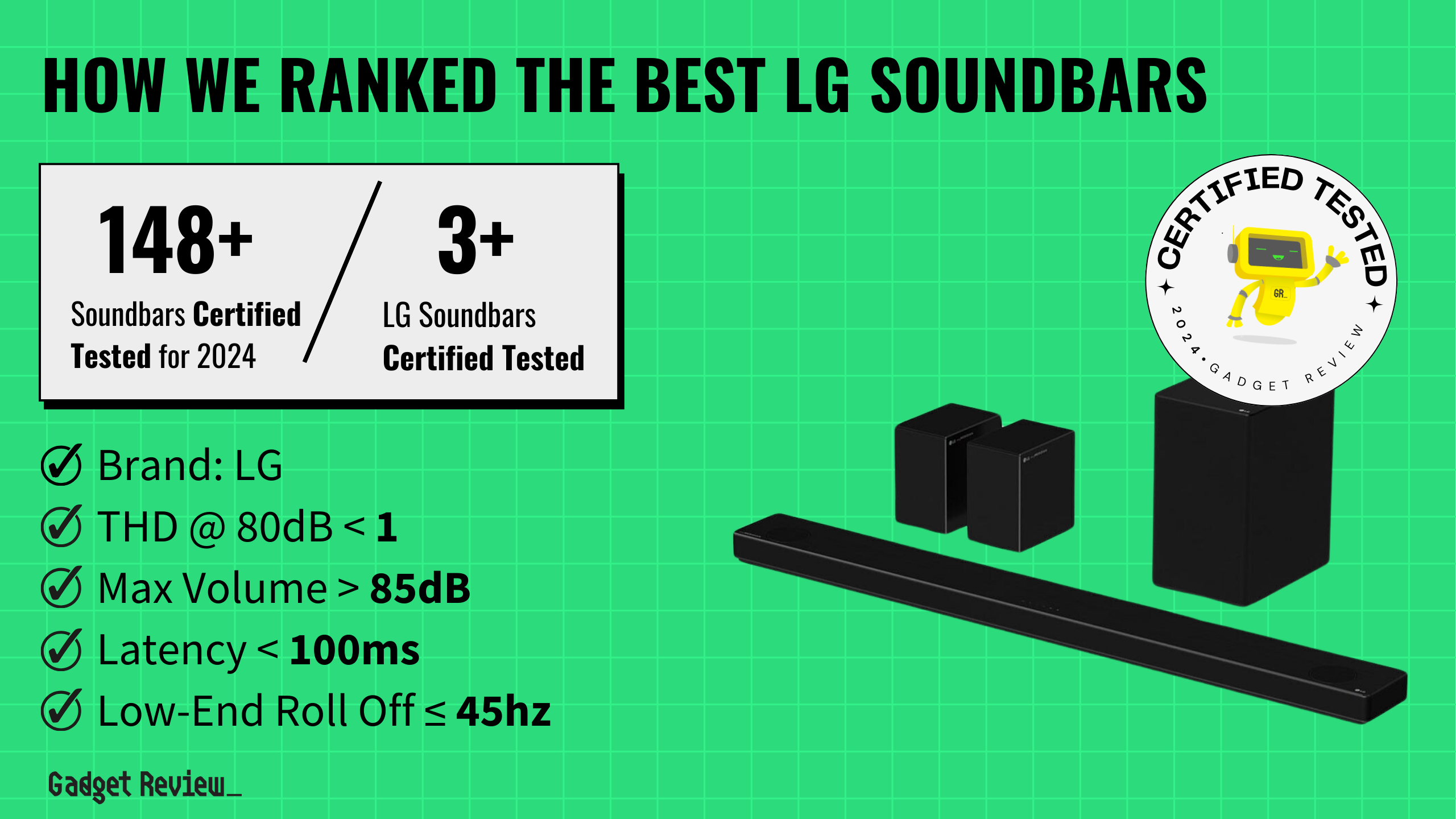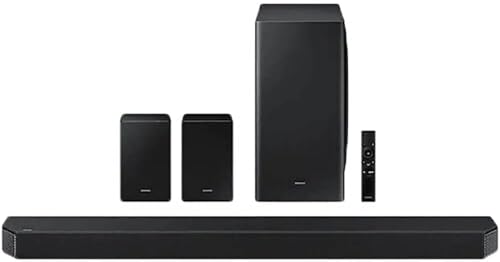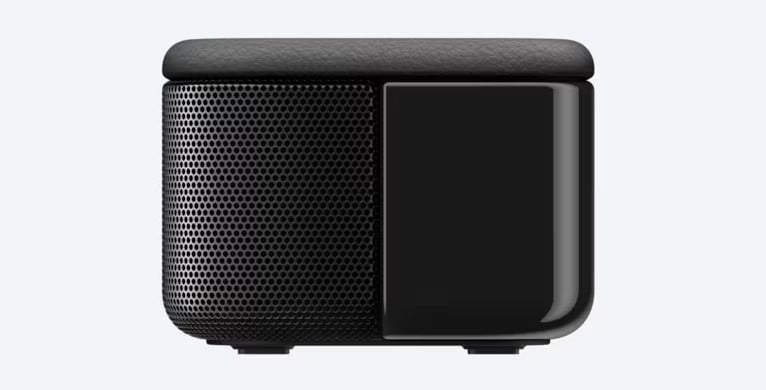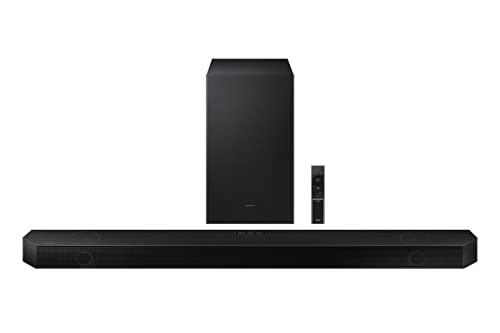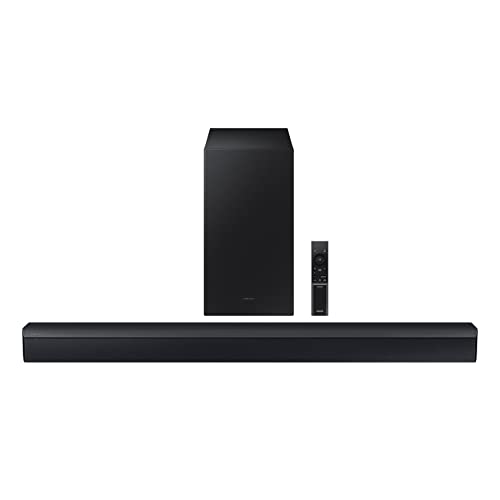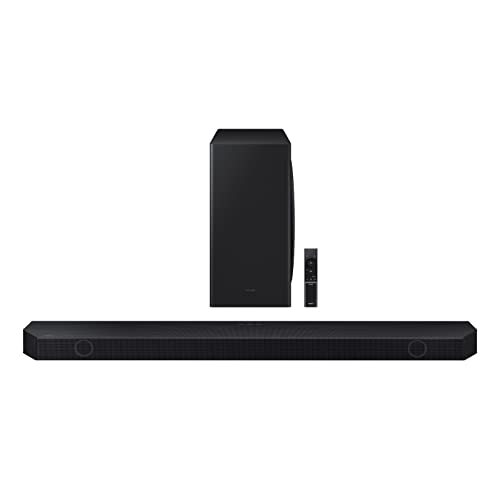In the world of soundbars, it’s easy to get lost in the numbers. Some of the best speakers, after all, are quality soundbars, and modern iterations often include support for 2.1 or 5.1 systems. What’s the real difference between them? The included speakers can dictate a soundbar’s overall performance, so which one might be the best fit for your favorite shows and movies?
Key Takeaways_
- A 2.1 single soundbar features two speakers or channels, while a 5.1 soundbar includes five speakers or channels for increased audio quality.
- You will usually experience richer audio when using a 5.1 sound bar due to the increase in channels.
2.1 Soundbars: Compact and Efficient
A 2.1 soundbar configuration offers a streamlined setup, perfect for those tight on space yet craving a quality listening experience. Having only two speakers and a separate subwoofer, this type of soundbar is compact, thus fitting easily in tight spaces where surround speakers can’t. If you’re new to the world of speakers, read up on what a subwoofer does with a soundbar.
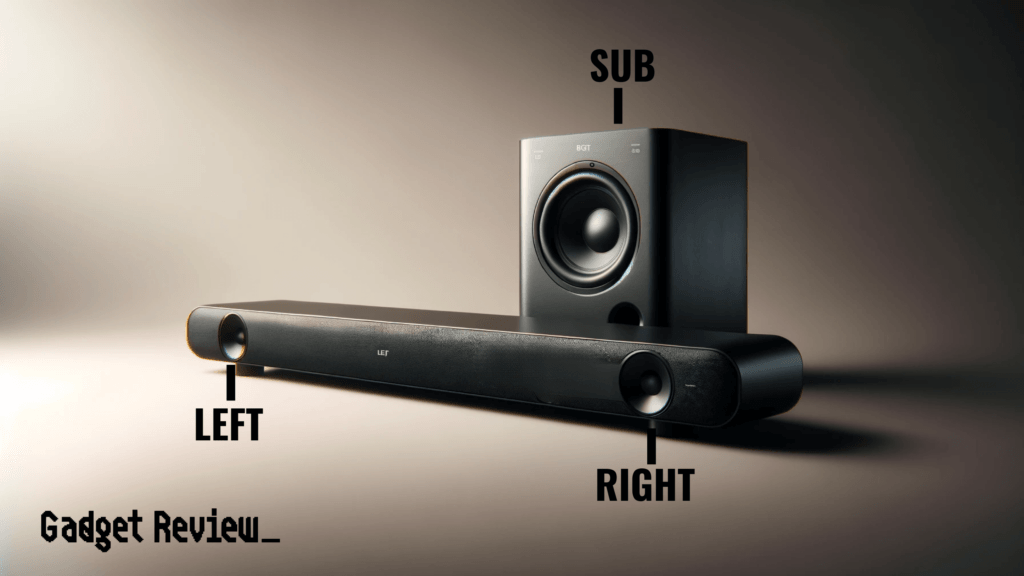
Power efficiency is another advantage of 2.1 soundbars. But like anything, these soundbars have their drawbacks. You won’t experience a sense of 360-degree immersion as the audio quality is limited to stereo projection from the front only.
STAT: When stereo (aka two-channel stereo or 2.0) sound became available to consumers in the 1950’s it added a more realistic soundstage for music listening where instruments and vocals could be separated and placed to the left and right front sides of the listening room.
2.1 soundbars also lack a center channel, which means dialogue emerges undefined between the left and right. That being said, a 2.1 soundbar could be the right option for those prioritizing affordability, simplicity, and compactness over all else.
5.1 Soundbars: Immersive Audio Experience
On the flip side, there’s the 5.1 soundbar configuration known for its ability to deliver an immersive audio experience. Emitting sound from all directions, a 5.1 soundbar can transport you right in the middle of your favorite movie or game. The added power and inclusion of additional speakers provide an enchanted listening experience akin to a theater.
Unlike its 2.1 counterparts, a 5.1 soundbar comes with five total channels instead of only two.
- This includes a dedicated center speaker that keeps dialogue anchored to the screen.
- Then there are two separate channels on the sides.
- For some 5.1 soundbars, the two channels are built into the soundbar.
- While for others, the two channels are individual speakers separate from the soundbar. Separate speakers can further contribute to a more immersive sound setup, but it’ll require some room placement planning.
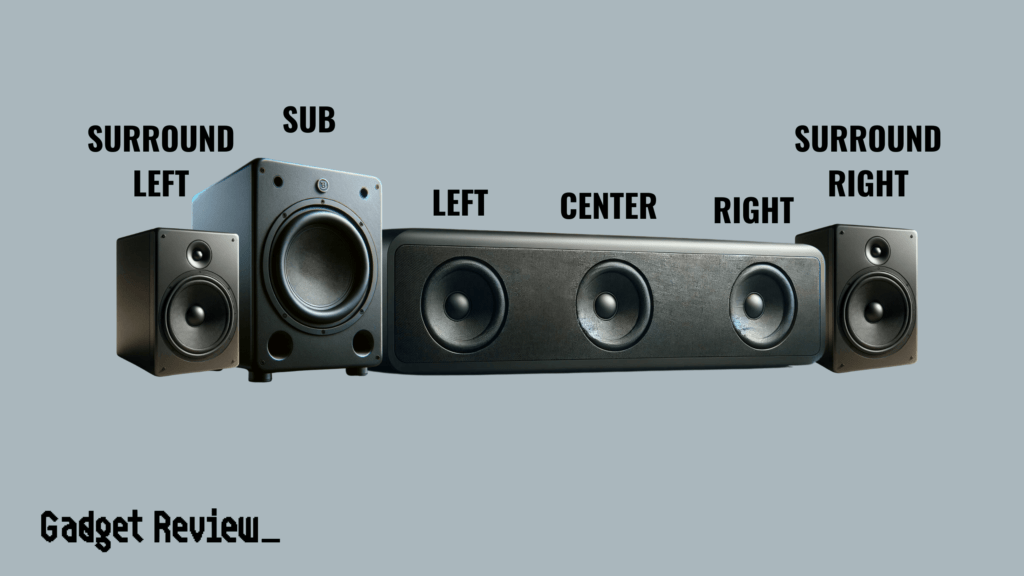
The immersive effect supplemented with Dolby Atmos devices can give you an immersive experience right in your living room–almost like you’re in the middle of the action.
However, these superior sound quality features come at a cost. More speakers mean a larger footprint, potentially trickier setup with all the connections, and increased power consumption. Nevertheless, if you’ve got room to spare, the 5.1 option could be an excellent choice to level up your sound experience.
Let’s Compare Them: 2.1 vs 5.1 Soundbars
Wondering which will be your go-to device for an exceptional sound experience?
With a 2.1 soundbar, we’re looking at a stereo configuration. “2.1” denotes two speakers and one subwoofer, streamlined in a single soundbar setup. But while this choice might dominate the music department due to its higher quality audio drivers, it does pose limitations when it comes to surround sound capabilities, which could mean a less immersive movie-night.
insider tip
Modern iterations of both types of soundbars are often available with Bluetooth to eliminate clutter.
For 5.1 soundbars, these come equipped not only with additional speakers but also a dedicated center channel. What does this mean? Well, this setup facilitates sound coming from all sides, giving you that theater-like experience, right at home.
Alright, let’s brush up some facts. Here’s a quick comparative chart:
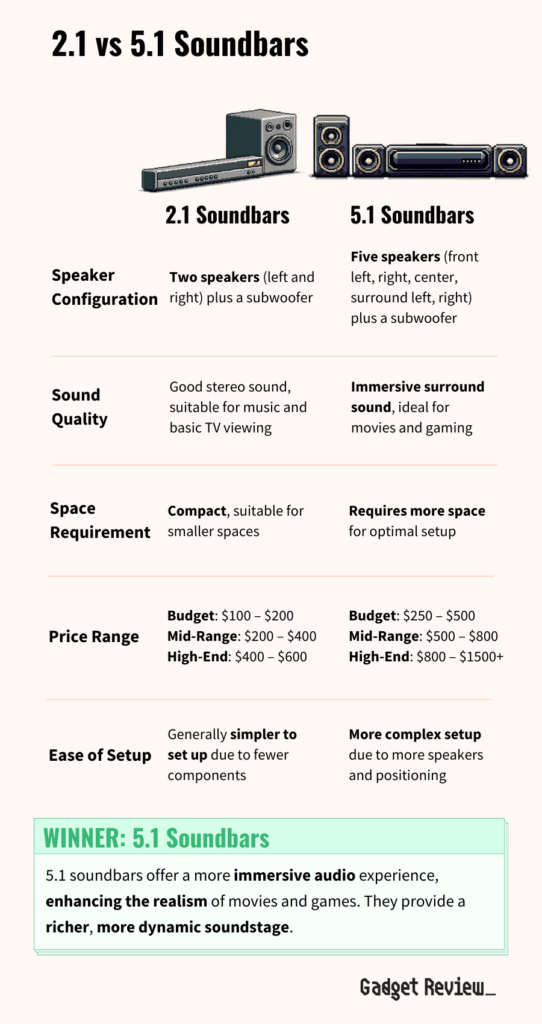
Room Size and Acoustics
Pick a soundbar that fits your room – this a simple, yet crucial advice I often give. For a cozy, compact space, 2.1 options are usually small soundbars and are often the ideal option. It consists of two speakers and a separate subwoofer. This setup provides a significant audio boost without overwhelming a small to medium-sized room.
A wireless subwoofer helps with the cable management as well. After all, going for power without considering space can detriment your overall sound experience.
Now let’s think bigger. For larger, more open spaces, especially a dedicated home theater, a 5.1 soundbar system brings that cinematic feel home.
The magic of 5.1 systems lies not only in the sound quality. It also provides the immersive, multidirectional sound experience that Dolby Atmos promises. So if your lounging area is on the larger end, you might want to consider this.
Remember, proper placement and acoustics of your sound devices are key. Proper calibration is necessary to avoid a cluttered setup. Though a 5.1 bar gives a great cinema-like experience, the audio quality of stereo music may diminish if not set up correctly. I recommend placing the seats/listeners roughly 8-12 feet from the soundbar. Ensure you have enough space if the rear speakers are external from the soundbar, as audio quality and sound experience rely heavily on these factors.
So Which Do You Pick?
It’s clear that both configurations have their strengths. A 2.1 soundbar is a compact, efficient choice, perfect for smaller rooms. But if you’re after immersive surround sound, a 5.1 soundbar is worth considering. If you’re overwhelmed by the idea of five channels but need more than two, compare 2.1 vs 3.1 soundbars instead.
Remember, it’s not just about the number of speakers or the price tag. It’s about what feels right in your space and what sounds best to your ears. So whether you’re a casual listener or an audiophile, consider your personal preferences, your budget, and your room size before making a choice.


